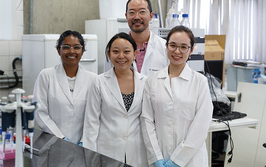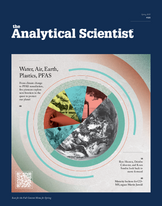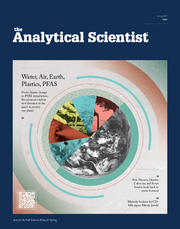This Week’s Mass Spec News
Henry Thomas | | 2 min read | News

Credit: Adobe Stock
Worth Your Time
Lingjun Li and colleagues develop a direct method to produce high-throughput multicellular tumor spheroid (MCTS) frozen sections for mass spectrometry imaging. Link
LC-Orbitrap-MS-based untargeted metabolomics coupled with machine learning effectively verifies the geographical origin, variety, and tissue specificity of widely used food ingredients turmeric and ashwagandha. Link
A new data acquisition for target analysis (nDATA) workflow uses ultrahigh-performance liquid chromatography-high-resolution full scan mass spectrometry/variable data-independent tandem mass spectrometry (LC-FS MS/vDIA MSMS) to effectively screen and identify pesticides from produce extracts. Link
Researchers develop a pneumatically assisted microfluidic probe (MFP) with two microfluidic channels for nanospray desorption electrospray ionization mass spectrometry imaging (nano-DESI MSI), imaging five mouse brain tissue sections to demonstrate its effectiveness. Link
(Preprint) Introducing protein analysis by mass spectrometry for ancient species (PAMPA): a software for peptide marker automation and taxonomic identification of archaeological samples for zooarchaeology by mass spectrometry (ZooMS). Link
The Analytical Scientist Presents:
Enjoying yourself? There's plenty more where that came from! Our weekly Mass Spec Newsletter brings you the most popular stories as they unfold, chosen by our fantastic Editorial team!
Essential Reading
No Escape for Melanoma
Melanoma cells can begin evading targeted therapy within hours of treatment – not by mutating, but by engaging a fast, reversible stress response – according to a new study by researchers at the Institute for Systems Biology (ISB) and MIT.
Using time-resolved mass spectrometry-based phosphoproteomics and deep RNA sequencing, the team tracked changes in melanoma cells exposed to the BRAF inhibitor vemurafenib. While BRAF-ERK signaling was quickly and durably suppressed as expected, they observed that melanoma cells survived not by reactivating this pathway, but by switching to an alternative route involving SRC family kinases (SFKs).
“This approach has the potential to prolong the effectiveness of BRAF inhibitors and improve patient outcomes,” said ISB Associate Professor and co-corresponding author Wei Wei in a press release… Read more!
(Mass) Spectacular and Strange
A Horse, My Codon for a Horse
I’m not much of a geneticist, but one thing I do know is that it’s the job of a stop codon to cause an end to protein translation – the clue’s in the name (literally). But what if there was a way to say no, or rather, neigh, to a stop codon’s plan of action?
That’s exactly what researchers at the MRC Toxicology Unit, University of Cambridge, have discovered in a new study on horses. Using liquid chromatography-tandem mass spectrometry (LC-MS/MS), they found that the KEAP1 protein – a critical oxidative stress regulator – somehow survives a premature stop codon (TGA) at amino acid position 15 in all Equus species. The team later confirmed that this stop codon is recoded as cysteine, ensuring protein function is preserved.
The authors note that their study “provides a rare, unambiguous example of stop codon recoding in a mammal,” highlighting its implications for protein annotation, evolution, and redox biology. The substituted cysteine, they add, “may sensitize KEAP1 to oxidative stress,” suggesting it contributes to horses' physiological prowess.
Deputy Editor of The Analytical Scientist

















